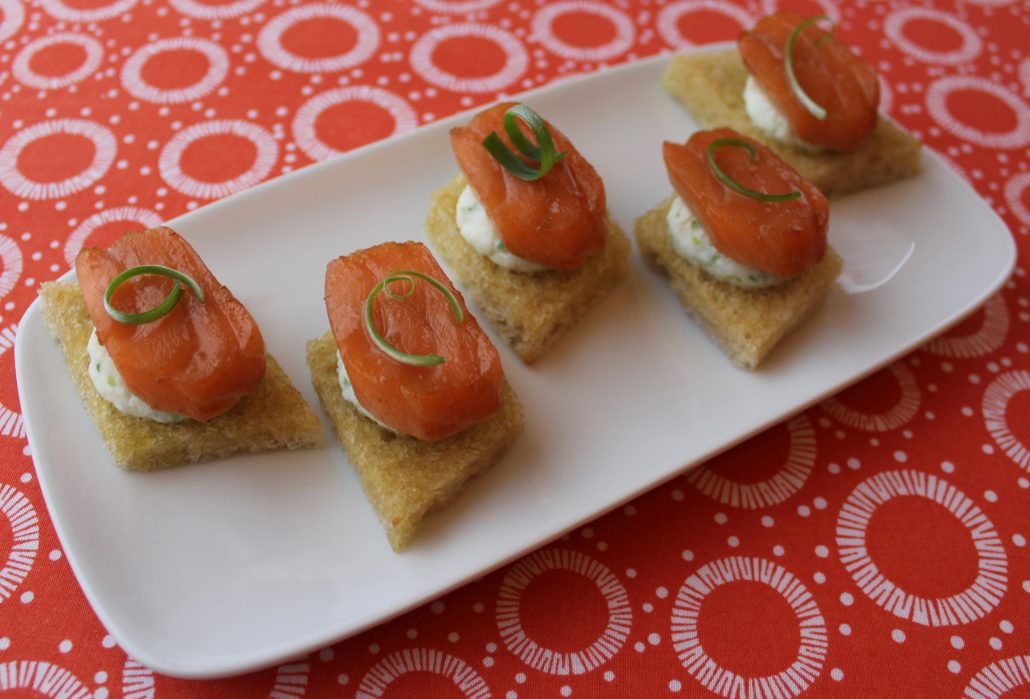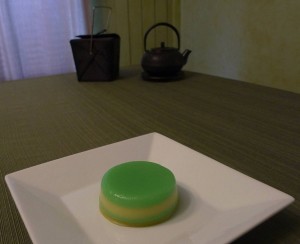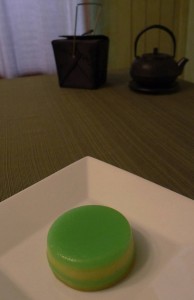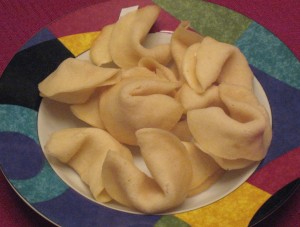Happy Lunar New Year ~ Japchae Cups with Prosciutto

To celebrate the Lunar New Year, I made a recipe that combines delicious flavors from the East and West. Japchae is a classic Korean noodle dish that I love. The main ingredient is a special kind of noodle made with sweet potato starch, so the dish is delightfully chewy. It is usually made with beef and often has strips of egg on top. In my version, I coated the noodles with egg and baked them into a mini muffin tin to make one-bite appetizers. The finishing touch is a little prosciutto on top, since this is the year of the pig after all. 😉
The cute little printable decoration is from a website called Hoosier Homemade.
Japchae Cups with Prosciutto
Makes about 40 cups
To make japchae:
3 tablespoons soy sauce
2 1/2 tablespoons granulated sugar
2 tablespoons toasted sesame oil
2 tablespoons lightly toasted sesame seeds, plus more for garnish (I used a mixture of white and black seeds)
8 ounces Korean sweet potato starch noodles
2 tablespoons high-heat cooking oil, divided
1 medium carrot, small diced
1/2 sweet onion, small diced
2 cloves of garlic, minced
2 large scallions, finely chopped
6 dried shitake mushrooms, rehydrated, stems removed, and cut into a small dice
5 ounces fresh baby spinach
To assemble cups:
Cooking spray
2 large eggs
3 ounces thinly sliced prosciutto
To make japchae:
In a small bowl, combine all of the sauce ingredients, from the soy sauce to the sesame seeds. Set aside.
Cook the noodles according to package instructions. Strain, but reserve the boiling water. Rinse the noodles in cold water. Place the noodles into a large bowl. Cut the noodles to a more manageable size with kitchen shears, about 8 inches long. Set aside.
Blanch the spinach for a few seconds in the reserved boiling water. Strain and run under cold water to stop the cooking. Squeeze out the excess water. Cut the spinach into small pieces. Transfer to the large bowl next to the noodles.
In a large sauté pan, heat 1 tablespoon of cooking oil over medium heat until shimmering, but not smoking. Sauté the carrot and onion with a little salt and pepper until softened. Add the garlic, and cook until fragrant. Transfer the mixture to the same large bowl as the noodles.
Add the remaining tablespoon of oil to the pan, heat, and then add the mushrooms. Sauté until they are a little caramelized. Transfer to the large bowl with all of the other ingredients.
Add the sauce to the noodles and toss everything with your hands until well combined.
To assemble cups:
Preheat oven to 325 F.
Coat a mini muffin pan well with cooking spray.
Crack the eggs into the japchae mixture, and combine with your hands until everything is evenly coated.
Fill each hole in the mini muffin pan with about 1 1/2 tablespoons of the japchae mixture. Make sure you get the vegetables mixed in, since they have a tendency to fall through the noodles.
Bake for 15 minutes, or until the egg is cooked through.
Let cool in the pan for about 10 minutes. To remove, run an offset spatula or butter knife around each cup.
Top with prosciutto.
Serve immediately or at room temperature. The easiest and least messy way to eat these is with chopsticks in one bite. I hope you enjoy!






